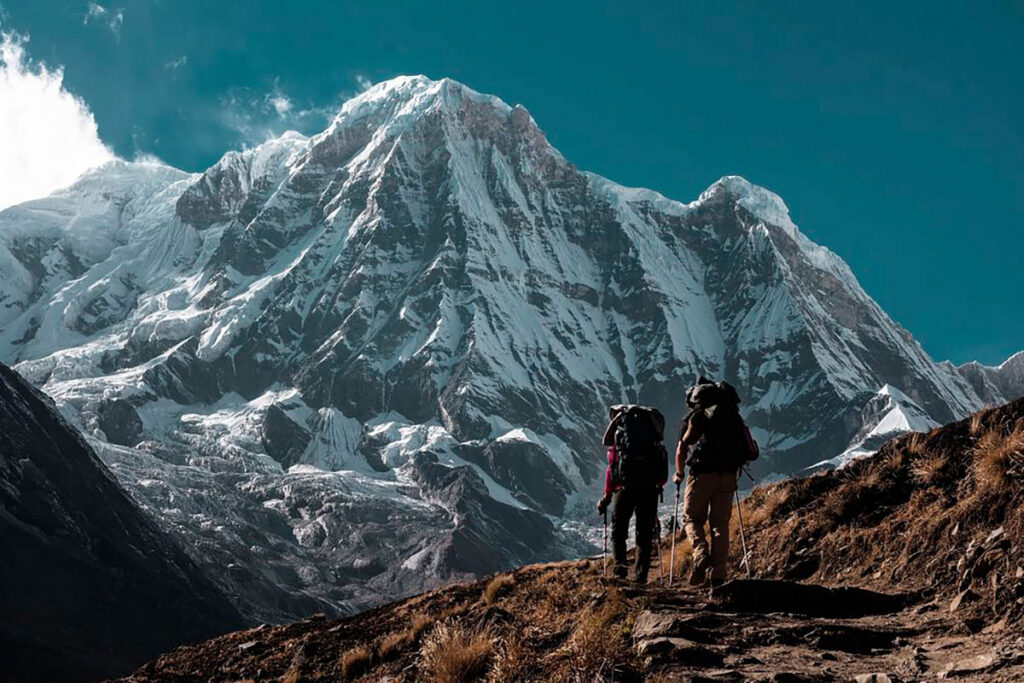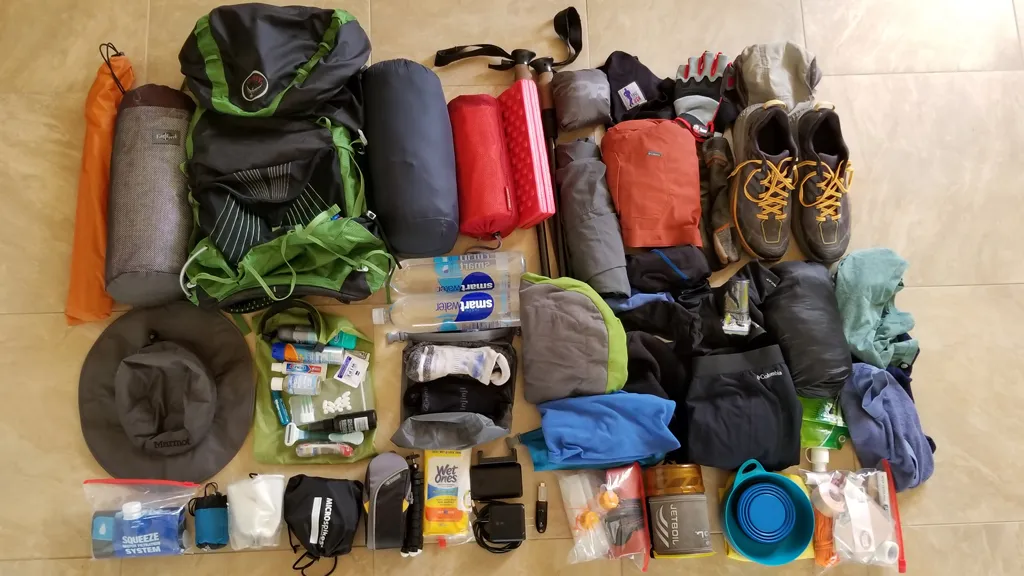How Does Trekking Differ from Mountaineering in Nepal?
How Does Trekking Differ from Mountaineering in Nepal? Nepal is a paradise for outdoor enthusiasts, offering two distinct activities: trekking and mountaineering. Both involve exploring the stunning landscapes of the Himalayas, but they differ significantly in terms of altitude, difficulty, and overall experience. Trekking is more accessible, allowing adventurers to enjoy beautiful trails, local cultures, and breathtaking views without the need for advanced skills or specialized equipment. In contrast, mountaineering demands rigorous training, physical strength, and a focus on climbing challenging peaks. This article explores the key differences between trekking and mountaineering in Nepal, highlighting their unique challenges and experiences.
Altitude and Difficulty Levels

Trekking in Nepal usually means walking on trails that reach up to around 5,500 meters. Famous treks, such as Everest Base Camp or the Annapurna Circuit, stay within this altitude range. While trekking does not require special climbing skills, it’s crucial to be fit and prepared for the challenges that come with high altitude. Trekkers often experience changes in oxygen levels, which can affect their physical condition and require time to acclimatize.
On the other hand, mountaineering involves climbing peaks that exceed 6,000 meters. This activity is significantly more challenging and requires specialized training and equipment, such as ropes, ice axes, and crampons. At these heights, the air becomes very thin, making it much harder to breathe and increasing the risk of altitude sickness. Climbers must not only be physically strong but also mentally prepared for the rigors of the ascent.
When trekking, most paths are well-marked, allowing trekkers to navigate through valleys and hills. Although altitude can make breathing more difficult and lead to fatigue or headaches, most trekkers can adjust with proper pacing and acclimatization. This makes trekking accessible to a broader audience, including families and individuals with varying fitness levels.
In contrast, mountaineering presents a host of challenges that require significant preparation. The steep, icy slopes and rocky terrains can pose risks that trekkers do not typically face. Climbers often have to camp on the mountain for several days, slowly ascending while acclimatizing their bodies to the high altitude. The higher the altitude, the tougher the climb, necessitating that only those with adequate training attempt these challenging ascents.
Physical Fitness and Skills Required
Trekking in Nepal caters to individuals of all fitness levels, making it suitable for both beginners and experienced hikers. No special skills are needed to embark on a trek; rather, general physical fitness is essential. Trekkers should be able to walk for several hours each day, often on clear and well-maintained trails. This makes trekking feel more like a long, enjoyable hike through beautiful villages and lush forests.
While you may feel tired by the end of a long day, trekking allows for breaks, and the pace can be adjusted based on individual comfort levels. Some familiarity with high altitudes is beneficial, but many trekkers do not require specialized training. This accessibility makes trekking an appealing option for a wide range of adventurers.
Mountaineering, on the other hand, is far more demanding. It requires substantial physical strength and stamina, as climbers face steep, challenging ascents, often on snow and ice. To be successful, climbers must be in excellent shape, as high-altitude climbing is particularly taxing on the body. Additionally, mountaineering necessitates the acquisition of specialized skills. Climbers must learn to use essential gear like ropes, harnesses, and ice axes effectively.
Understanding the risks associated with mountaineering is also crucial. Climbers must be trained to navigate steep rock faces and icy terrains, which require different techniques and knowledge to ensure safety. The potential hazards, such as falling, avalanches, or extreme weather conditions, mean that mountaineers typically undergo extensive training and often work with guides who provide valuable instruction on gear usage and safety measures.
In summary, while trekking requires general fitness with no technical skills, mountaineering demands a higher level of physical preparation and specialized training. This difference makes trekking more inclusive, while mountaineering appeals to a more niche group of adventurers who =are seeking to conquer high-altitude peaks.
Equipment and Gear

When preparing for a trek in Nepal, the necessary gear is relatively straightforward. A sturdy pair of good-quality hiking boots is essential, providing comfort and support for long walks. Additionally, trekkers should bring warm clothing, including layers of jackets, gloves, and hats, to adapt to changing weather conditions—especially as temperatures can drop significantly at higher elevations.
Many trekkers opt to use trekking poles, which assist with balance and help reduce strain on the knees, particularly on steep or uneven trails. Lightweight backpacks are also important for carrying personal items, water, and snacks without being overly cumbersome.
In contrast, mountaineering requires a more extensive and technical array of gear due to the challenging conditions climbers face. Climbers need specialized boots designed for cold weather and ice walking. These boots are typically equipped with crampons—metal spikes that provide traction on slippery surfaces, ensuring that climbers can ascend safely without the risk of slipping.
Ropes and harnesses are crucial for maintaining safety during climbs, particularly on steep rock faces or ice walls. The harness acts as a safety belt, helping to prevent falls while using the ropes. Helmets are another indispensable piece of mountaineering gear, protecting climbers from potential falling rocks or ice.
Moreover, mountaineers must pack additional equipment such as sleeping bags suitable for extreme cold, tents, cooking gear, and oxygen tanks for high-altitude ascents. This extra gear is essential because mountaineering is inherently more technical and dangerous than trekking, necessitating that climbers have the right equipment to navigate challenging and icy terrain safely.
Guidance and Support
Trekking in Nepal, especially on well-known routes like the Everest Base Camp trek or the Annapurna Circuit, typically does not require extensive guidance or assistance. Many trekkers feel comfortable traveling independently or with friends, utilizing maps and following clear trail markers. However, if desired, trekkers can hire local guides to enhance their experience, offering insights into the local culture and environment.
Hiring porters can also make trekking easier, particularly for those who may struggle with heavy packs. On popular trekking routes, numerous tea houses and lodges provide convenient stops for food, shelter, and directions, allowing trekkers to focus on enjoying the journey.
In contrast, mountaineering requires professional guidance and support due to the inherent risks involved in climbing high peaks. Hiring experienced mountain guides is essential, as they possess in-depth knowledge of the routes, weather conditions, and safety protocols. These guides assist climbers in planning their journeys and navigating the most suitable paths while monitoring changing weather patterns.
In many mountaineering expeditions in Nepal, the expertise of Sherpas is invaluable. Sherpas are local professionals who not only guide climbers but also help carry heavy gear, set up camps, and ensure a smooth climbing experience. Their extensive experience in high-altitude conditions contributes significantly to the safety and success of the climb.
Unlike trekking, mountaineering necessitates careful and detailed planning before embarking on the journey. Guides work closely with climbers to prepare by reviewing weather forecasts, organizing gear, and determining the best climbing schedule. Given the risks associated with mountaineering—such as avalanches, altitude sickness, and extreme weather—having expert support is crucial for a safe and successful expedition.
Risks and Safety
When trekking in Nepal, the risks are generally manageable. One of the most common challenges trekkers face is altitude sickness. This condition occurs when individuals ascend too quickly without allowing their bodies to acclimatize to lower oxygen levels. Symptoms may include headaches, dizziness, nausea, and extreme fatigue. If altitude sickness occurs, the immediate remedy is to descend to a lower altitude and allow the body to recover.
Fatigue is another common issue, particularly on longer treks. Staying hydrated and taking regular breaks can help mitigate feelings of tiredness. Additionally, trekkers should be prepared for sudden changes in weather, as conditions can shift rapidly in the mountains. Being equipped with proper clothing and gear is essential for safety and comfort during the trek.
While trekking poses risks, with proper planning and attention to personal health, most people can complete their treks safely and enjoyably. The supportive infrastructure along popular routes—such as lodges and guides—further helps minimize risks.
Conversely, mountaineering carries much higher stakes. The severe risks climbers face include severe altitude sickness, which can escalate quickly if not addressed. As climbers ascend to higher altitudes, the likelihood of encountering life-threatening situations increases, including the dangers of avalanches, which can occur suddenly, and crevasses—deep fissures in the ice that can be hard to see and very dangerous if one falls in.
Climbers must undergo rigorous training to manage these risks effectively. This includes learning how to navigate challenging conditions and using the appropriate equipment to ensure safety. Rigorous planning is also essential, as mountaineers need to continually assess weather conditions, prepare safety protocols, and employ the correct gear for protection.
Experienced guides and Sherpas play a critical role in helping mountaineers navigate these dangers, providing valuable expertise in high-altitude climbing and emergency procedures. Given the elevated risks associated with mountaineering, climbers must remain fully aware of the challenges they may face and be prepared to adapt their plans accordingly.
Environmental Impact and Duration
The duration of treks in Nepal can vary significantly, ranging from a few days to several weeks, depending on the chosen route. Trekkers typically walk along established paths that wind through forests, villages, and valleys, which keeps the environmental impact relatively low. Most trekkers carry their supplies and use local resources such as food and simple accommodations, which minimizes waste and the overall footprint on the environment.
Additionally, since trekking groups are usually small, they have less impact on the surrounding ecosystem. By sticking to marked trails, trekkers help preserve the natural landscape and avoid causing damage to delicate habitats.
In contrast, mountaineering expeditions tend to be longer, often requiring several weeks or even months to complete. The environmental impact of mountaineering can be more significant due to the need for base camps, which involve setting up temporary living quarters that require resources such as food, fuel, and equipment.
Mountaineering groups may generate more waste, particularly if proper disposal methods are not followed. The use of large amounts of equipment—including tents, food supplies, and oxygen tanks—adds to the environmental burden, as these items must often be transported by porters or helicopters to remote locations.
Additionally, mountaineers typically consume more energy, as they need to melt snow for water and cook food at high altitudes. If a mountain receives a high volume of climbers, the area may become overcrowded, leading to issues such as littering and pollution, which can harm the pristine beauty and ecosystems of the region. This makes it crucial for mountaineers to adopt responsible practices and leave no trace, ensuring that their adventures do not negatively impact the environment.
Cultural and Scenic Experiences
Trekking in Nepal offers an incredible opportunity to immerse oneself in local culture and experience the diverse landscapes of the region. As trekkers walk through picturesque villages, they encounter vibrant communities filled with colorful houses, welcoming locals, and rich traditions. Observing daily life in these villages—whether it’s farming, animal husbandry, or traditional crafts—provides trekkers with a genuine understanding of the culture.
Tasting local cuisine is another highlight of trekking. Dishes like dal bhat (rice and lentils) and momo (dumplings) offer a delicious way to connect with the culture while fueling the body for the journey ahead. Additionally, trekkers are treated to stunning natural scenery along the way, including lush forests, expansive valleys, and breathtaking mountain views. The trails are often adorned with waterfalls, rivers, and diverse flora and fauna, enhancing the overall trekking experience.
In contrast, mountaineering provides a different kind of adventure. When climbers ascend high peaks, their primary focus is on reaching the summit. As a result, they spend much of their time preparing for the climb and overcoming the challenges of the ascent, which limits their opportunities to engage with local communities.
The routes taken by mountaineers often lead to remote areas, away from villages and cultural experiences. At high altitudes, the scenery transforms dramatically, characterized by rocky cliffs, glaciers, and snow-covered landscapes. While the views are awe-inspiring, the isolation felt during a climb can make the experience feel less connected to local culture.
While trekkers revel in a blend of cultural richness and natural beauty, mountaineers concentrate on the physical and mental challenges of reaching the summit. Each experience offers something unique, whether it’s the camaraderie of fellow trekkers or the exhilarating thrill of conquering towering peaks.
Trekking and mountaineering in Nepal present two exciting yet distinctly different experiences. Trekking allows adventurers to immerse themselves in local culture, enjoy stunning landscapes, and embark on manageable journeys through well-marked trails. This activity caters to individuals of various fitness levels, offering an adventure that doesn’t require specialized skills.
On the other hand, mountaineering is a more intense challenge, requiring significant preparation, training, and the right equipment to safely navigate the rugged, high-altitude mountains. The risks are greater, and the demands on climbers are substantial, making this activity suitable for those with specialized skills and a thirst for adventure.
Ultimately, whether you seek a leisurely trek through vibrant villages or the thrill of climbing some of the world’s highest peaks, Nepal has something to offer for everyone. The choice between trekking and mountaineering depends on individual preferences, skill levels, and the kind of experience one desires. Regardless of the path taken, the breathtaking beauty of Nepal’s landscapes and the warmth of its people are sure to leave a lasting impression on all who visit.
Ready to Experience the Best of Nepal?
Whether you’re eager to trek through vibrant villages or challenge yourself with high-altitude mountaineering, EBC Trek Dot Net is here to guide you every step of the way. Our expert guides and personalized itineraries ensure a safe and unforgettable adventure.
